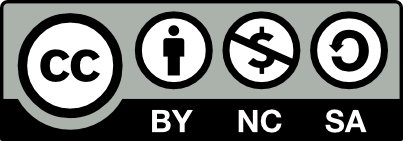Latin American Exchange Rate Policy in the Context of Low International Monetary Cooperation
DOI:
https://doi.org/10.24215/23142766e069Keywords:
Exchange Rates, Reserves Accumulation, International Financial Architecture, International Monetary CooperationAbstract
Monetary cooperation in the context of the international monetary system following the Bretton Woods Agreements is low. Although the floating exchange rate regime promised less traumatic adjustments than its predecessor, several factors concurred in obtaining results of the opposite sign. The greater flexibility of exchange rate policies in Latin America since the 2000s, as well as the accumulation of external reserves, helped to overcome the global financial crisis more efficiently than in past exogenous shocks. At the global level, the accumulation of reserves feeds the problem of global imbalances while the existence of a multiplicity of exchange rate agreements makes the international monetary system a semi-chaotic universe.
Downloads
References
Aizenman,J. y J. Lee (2005),“International Reserves: Precautionary versus Mercantilist Views,TheoryandEvidence”,documento detrabajon°11366,Cambridge,MA: Na-tionalBureau of Economic Research.
Aizenman,J. y M. M.Hutchison(2010),“ExchangeMarket Pressure andAbsorptionbyInter- national Reserves:Emerging Markets andFearofReserveLoss during the2008-09 Crisis”, documentode trabajo nº 16260,Cambridge,MA:NationalBu- rau ofEconomic Research.
Alberola,E. y J. M.Serena(2010),“Evoluciónyperspectivassobre losdesequilibrios globalesen el nuevoescenario internacional”,Revistade Economía, Madrid, nº 855; pp.27-41.
Calvo,A.G.yC.M.Reinhart(1999),“FearofFloating”,documentodetrabajon°7993,Cam-bridge,MA:National BureauofEconomicResearch.
Chinn,M.D.yS.Wei,“AFaith-BasedInitiative:DoesaFlexibleExchangeRateRegimeReallyFacilitate CurrentAccountAdjustment?documento detrabajo nº14420,Cam-bridge:MA:National BureauofEconomicResearch.
Daude,C., E. LevyYeyatiy A.Nagengast(2014), “Ontheeffectivenessof exchange rate inter-ventionsin emergingmarkets”,documento detrabajonº 288,Cambridge,MA:CenterforInternational Development.
De laTorre,A., E. LevyYeyatiy S.Pienknagura(2013),Latin America’sDecelerationandtheExchangeRateBuffer, Washington, DC:Banco Mundial.
Eichengreen,B., R.Hausmanny U.Panizza(2002),“OriginalSin: ThePain,theMistery, andtheRoad toRedemption”, documentopresentado en laConferenciaCurrency andMaturityMatchmaking:RedeemingDebt fromOriginalSin,Washington,DC:Banco Interamericanode Desarrollo.http://www.financialpolicy.org/fi-nancedev/hausmann2002.pdf
Eichengreen, B. (2008),Globalizing Capital: A History of the International Monetary System,
Princeton, NJ: Princeton University Press.
Eichengreen,B. (2009), “The Dollar Dilemma”,ForeignAffairs,New York, v.88; nº5; pp. 52-68.
Eichengreen,B (2011),ExorbitantPrivilege:TheRiseandFalloftheDollarandtheFutureoftheInternationalMonetarySystem,NewYork:OxfordUniversityPress.
Feldstein,M.(1999), “Self-ProtectionforEmergingMarketsEconomies”,documento detra-bajo nº 6907,Cambridge,MA:NationalBureauof EconomicResearch.
French Davis,R.(2003),“Políticaseconómicas, desarrollonacional ycrisis financieras”,Re-vistade laFacultadde CienciasEconómicasde la UNMSM,Lima v.VIII;nº 22; pp.7-32.
Fischer,S.(2001),“ExchangeRateRegimes:IstheBipolarViewCorrect?”,JournalofEco-nomicPerspectives,Pittsburgh,PA,v.15;nº 2; pp.1-24.
FondoMonetario Internacional (2019),Perspectivasde la Economía Mundial,Washington,DC: FondoMonetario Internacional.
Frankel,J. A. (2012),“ChoosinganExchangeRate Regime”, enJames,J., I. W. Marsh y L.Sarno (eds.),Handbook of ExchangeRates,Nueva Jersey:WileyOnline Library, https://www.hks.harvard.edu/fs/jfrankel/ExRRegimes-MarshSar-noHdbkCh28.pdf
Frenkel,R. (1989),El régimen dealta inflacióny el nivel de actividad,Buenos Aires: CEDES. Frenkel,R. y M.Rapetti (2010),AConciseHistory of Exchange Rate Regimes in Latin America,Center for Economic and Policy Research (CEPR).
Frieden,J. A. (2017), “TheGovernanceofInternational Finance”,enFrieden,J. A., D. A. Lake y
J. L. Broz(ed.),Internationalof PoliticalEconomy,New York: W.W.Norton&Company,pp.518-534.
Ghosh, A. R., J. D. Ostry y M. S.Qureshi (2014), “ExchangeRateManagementand Crisis Sus-ceptibility:AReassessment”, documentodetrabajo nº14/11, Washington,DC: FondoMonetario Internacional.
Ghosh,A.R.,M.S.QureshiyC.G.Tsangarides(2014),“FriedmanRedux:ExternalAdjustment andExchangeRate Flexibility”, documento detrabajo nº14/146, Washington,DC: FondoMonetarioInternacional.
Hamada,K. (1985),ThePolitical Economyofinternational monetaryinterdependence,Cam-bridge,MA: MITPress.
Hausmann,R., M.Gavin,C. PagesSerray E.Stein(1999),“FinancialTurmoil and the Choice of Exchange Rate Regime”, CIDdocumentodetrabajonº400,Washington,DC:Banco Inter-AmericanodeDesarrollo.
Ilzetzki,E.,C.M.ReinhartyK.S.Rogoff(2019),“ExchangeArrangementsEnteringtheTwentyFirstCentury: WhichAnchorWillHold?,Quarterly Journal of Economics, vol.134,nº 2, pp.599-646.
Johnson,H.G.(1958),InternationalTradeandEconomicGrowth:StudiesinPureTheory,Lon-dres:G. Allen &Unwin.
Katz,S. (2009),“Centroy Periferia: Lapropagaciónde lacrisisa laseconomíaslatinoamerica-nas”,EnsayosEconómicos,BuenosAires,nº53-54;pp.117-166.
Krugman,P.(1979),“A Model ofBalancePaymentCrisis”,Journal ofMoney,Credit and Bank-ing,v.11;nº3; pp.311-325.
Krugman,P.(2000), “Currency Crises”,en P. Krugman(ed.),CurrencyCrises, Chicago:Univer- sityofChicago Press.
Krugman, P. R., M. Obstfeld y M. J. Melitz (2012),Economía Internacional: teoría y política,
Madrid: Pearson Educación.
LevyYeyati,E.(2011),“ExchangeRateRegimes”,CIFdocumentodetrabajonº02/2011,Bue- nosAires: Universidad TorcuatoDiTella.
Levy Yeyati,E. y F.Sturzenegger, (2007), “FearofAppreciation”, documentodetrabajonº4387, Washington,DC:BancoMundial.
Li,J.yR.S.Rajan(2005),"CanHighReservesOffsetWeakFundamentals?ASimpleModelofPrecautionary Demandfor Reserves",documentodetrabajonº509,Adelaida:CentreforInternationalEconomicStudies.
Machinea,J. L. y J. M.Fanelli(1988), “Elcontrolde la hiperinflación”, en Bruno, M., G. DiTe-lla,R.Dornbuschy S.Fischer(eds.),InflaciónyEstabilizaciónLaExperienciadeArgentina, Bolivia,Israel y México,México:Fondo deCultura Económica,pp.141-188.
Martin,L. L. y B. A. Simmons (1999),“TheoriesandEmpirical StudiesofInternationalInstitu-tions”,enKatzenstein,P.J., R.O.Kehoaney S.D.Kramer(eds).,ExplorationandContestationsintheStudy of WorldPolitics,Cambridge,MA: MITPress,pp. 729-757.
MatooA. y A.Subramanian (2008), “Currency UndervaluationandSovereignWealthFunds”, documentodetrabajonº 08-2,Washington,DC: PetersonInstitutefor Inter-nationalEconomics
NacionesUnidas(2001),“Report oftheHigh-Level Panelon Financing forDevelopment” (Zedillo Report),New York: UnitedNations, recuperadodehttp://www.un.org/en/events/pastevents/financing_for_development_re-port.shtml
Obstfeld,M.yK.Rogoff(1995),“TheMirageofFixedExchangeRates”,documentodetrabajonº 5191,Cambridge,MA:National Bureauof EconomicResearch.
Ocampo,J. A. (2002),DevelopingCountries’AnticyclicalPoliciesin aGlobalized World,Santi- ago de Chile:NacionesUnidas- CEPAL.
Ocampo,J.A.(2009),“Implicacionesdepolíticaeconómicadelainestabilidadfinancieraac-tual”,EnsayosEconómicos,BuenosAires,nº53-54;pp.191-215.
Ocampo,J.A.(2011),“¿CómofueeldesempeñodeAméricaLatinadurantelacrisisfinanciera global?”,EnsayosEconómicos,BuenosAires,nº61-62;pp.7-33.
Ocampo,J. A. (2016), “A brief history oftheinternational monetary systemsinceBretton Woods”, documentodetrabajonº 97, Helsinki: UNU-WIDER.
Ocampo,J. A. (2017),Resetting theInternationalMonetary (non) System,Oxford:OxfordUni-versity Press.
Olivera, J. G.H. (1969), “A Note on the Optimal Rate of Growth of International Reserves”,
JournalofPoliticalEconomy,v.77;nº2;pp.245-248.
Perry,G.yL.Servén(2003),TheAnatomyofaMultipleCrisis:WhyWasSpecialandWhatCanWe Learn from it?,Washington,DC:BancoMundial.
Ramos,J. (1985),“StabilizationandAdjustment Policies”,CEPALReview, Santiago de Chilenº25;pp. 85-108.
Rodrik,D.(2006),“The Social Cost ofForeignExchangeReserves”, documentode trabajo nº11952, Cambridge,MA: NationalBureauof EconomicResearch.
Rodrik,D.(2008),“The Real Exchange Rate and EconomicGrowth”,BrookingsPaperson Eco-nomicActivity,Washington,DC, nº2; pp. 365-412.
Rojas-Suárez,L.(2010),“TheInternational Financial Crisis:EightLessonsfor and from LatinAmerica”,documento detrabajo nº202, Washington,D.C.:CenterforGlobal Development.
Salvatore,D. (2011),International EconomicsTrade andFinance,Singapore:JohnWiley&Sons.
Stein,A. A. (1990),Why NationsCooperate: CircumstanceandChoiceinInternationalRela-tions,Ithaca:CornellUniversity Press.
Triffin,R.(1947), “NationalCentralBankingand theInternational Economy”,Postwar Eco-nomicStudies,St.Louis, nº7,pp. 46-81.
Triffin,R.(1968),ElSistema monetario internacional,Buenos Aires:Amorrortu. Williamson,J.H.(1977),Thefailureofworldmonetaryreform1971-1974,Nairobi:NGNelson
Williamson,J.(2008), “ExchangeRateEconomics”, documentodetrabajoNº 08-3, Washing- ton, DC: PetersonInstituteforInternationalEconomics,InstituteofInterna- tionalEconomics.
Wolf,M. (2014),“Three eventsthatshapedourworld”,Financial Times,Londres,10de junio.
Downloads
Published
How to Cite
Issue
Section
License
Aquellos autores/as que tengan publicaciones con esta revista, aceptan los términos siguientes:
- Los autores/as conservarán sus derechos de autor y garantizarán a la revista el derecho de primera publicación de su obra. A partir de noviembre del 2020 los artículos se publicarán en la revista bajo una licencia Creative Commons Atribución- NoComercial-CompartirIgual 4.0 Internacional (CC BY-NC-SA 4.0). Acorde a estos términos, el material se puede compartir (copiar y redistribuir en cualquier medio o formato) y adaptar (remezclar, transformar y crear a partir del material otra obra), siempre que a) se cite la autoría y la fuente original de su publicación (revista y URL de la obra), b) no se use para fines comerciales y c) se mantengan los mismos términos de la licencia.
Previo a esta fecha los artículos se publicaron en la revista bajo una Licencia de reconocimiento de Creative Commons (BY-SA 2.5). - Los autores/as podrán adoptar otros acuerdos de licencia no exclusiva de distribución de la versión de la obra publicada (p. ej.: depositarla en un archivo telemático institucional o publicarla en un volumen monográfico) siempre que se indique la publicación inicial en esta revista.
- Se permite y recomienda a los autores/as difundir su obra a través de Internet (p. ej.: en archivos telemáticos institucionales o en su página web) antes y durante el proceso de envío, lo cual puede producir intercambios interesantes y aumentar las citas de la obra publicada. (Véase El efecto del acceso abierto).

























